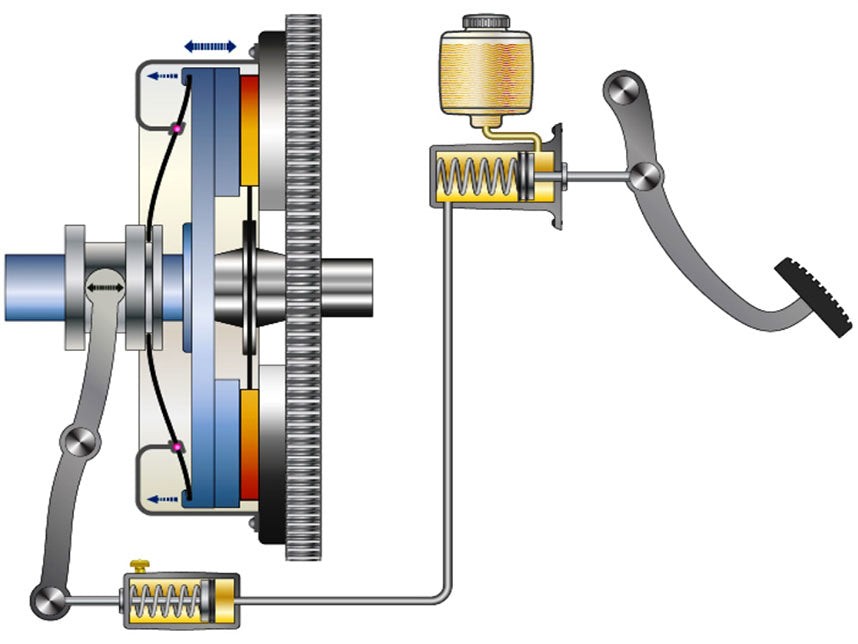Diagnosing clutch problems might seem daunting, but with a systematic approach and a bit of understanding, you can pinpoint issues effectively. As an expert from xentrydiagnosis.store, we’re here to guide you through the common clutch problems, their symptoms, and how to diagnose them. This guide aims to provide a comprehensive overview, ensuring you can confidently tackle Clutch Problems Diagnosis.
Identifying When Your Clutch Fails to Disengage
A properly functioning clutch should disengage smoothly when you press the pedal, allowing you to shift gears or come to a stop without stalling. However, when the clutch fails to disengage, you might experience difficulty shifting gears, or the car might creep forward even with the clutch pedal fully depressed. This issue can manifest suddenly or gradually, each indicating different potential causes.
Sudden Clutch Disengagement Failure:
A sudden failure often points to a component breaking or becoming disconnected. Here are common culprits:
- Broken or Loose Clutch Cable: In cable-operated clutches, a snapped or detached cable will immediately prevent clutch disengagement.
- Broken or Loose Linkage: Similar to cables, mechanical linkages can break or become disconnected, especially in older vehicles.
- Failed Hydraulic Master or Slave Cylinder: Hydraulic clutch systems rely on these cylinders to transmit pedal pressure. Failure in either cylinder results in loss of hydraulic pressure and disengagement.
- Leaking Hydraulic Line: A leak in the hydraulic line will lead to a gradual or sudden loss of hydraulic fluid, impacting clutch operation.
- Improper Throwout Bearing Fit: If the throwout bearing isn’t correctly fitted or compatible with the pressure plate, it can bind and prevent disengagement.
- Contaminated Clutch Disc: Foreign material, such as oil or debris, on the clutch disc can cause it to stick to the flywheel or pressure plate, hindering disengagement.
Gradual Clutch Disengagement Failure:
When clutch disengagement deteriorates over time, consider these gradual wear or degradation issues:
- Stretched Clutch Cable: Over time, clutch cables can stretch, leading to insufficient clutch travel for complete disengagement.
- Bent Clutch Linkage: Bent or distorted linkage components can reduce the effectiveness of the clutch mechanism.
- Failing Master or Slave Cylinder (Internal Leak): Internal leaks within the master or slave cylinder can develop slowly, gradually reducing hydraulic pressure.
- Low Hydraulic Fluid: Slow leaks or lack of maintenance can lead to low hydraulic fluid levels, affecting clutch performance.
- Broken Motor or Transmission Mount: Worn or broken mounts can cause engine and transmission misalignment, impacting the clutch linkage or hydraulic system and leading to disengagement issues.
Diagnosing Clutch Engagement Problems
A clutch that fails to engage properly, often described as clutch slippage, is a common sign of wear. This occurs when the clutch disc doesn’t create enough friction to fully transfer engine power to the transmission, especially under load. While gradual slippage is typical of a worn clutch, sudden slippage can indicate other issues.
Clutch Fails to Engage at All:
When the clutch completely fails to engage, preventing any power transfer, consider these potential problems:
- Binding Linkage or Cable: Corrosion or lack of lubrication can cause the clutch cable or linkage to bind, preventing movement.
- Bent Linkage: Damage to the linkage can restrict its movement and prevent clutch engagement.
- Seized Slave Cylinder: A seized slave cylinder in a hydraulic system will prevent the clutch fork from moving, thus no engagement.
- Seized Throwout Bearing: A seized throwout bearing can prevent the pressure plate from applying force to the clutch disc.
- Failed Pressure Plate Diaphragm: A broken or weakened diaphragm spring in the pressure plate will reduce clamping force on the clutch disc.
- Failed Friction Plate (Clutch Disc): Complete disintegration or failure of the friction material on the clutch disc will eliminate friction needed for engagement.
Clutch Slipping Under Load:
Clutch slippage, particularly noticeable when accelerating or going uphill, is often due to:
- Poorly Adjusted Cable or Linkage: Incorrect adjustment can reduce clutch engagement force.
- Normal Friction Plate Wear: As clutch discs wear down, they become thinner and provide less friction. This is the most common cause of clutch slippage over time.
- Glazed Friction Surfaces: Overheating and excessive slipping can glaze the friction material, reducing its grip.
- Worn Flywheel Friction Surface: A worn or scored flywheel surface reduces friction with the clutch disc.
- Weak Pressure Plate Diaphragm Springs: Springs weaken over time, reducing clamping force.
- Leaking Engine Rear Main Seal or Transmission Input Shaft Seal: Oil contamination from these leaks significantly reduces friction between the clutch disc and flywheel/pressure plate.
- Warped or Overheated Pressure Plate or Flywheel: Heat damage can warp these components, leading to uneven contact and slippage.
Addressing Other Clutch Issues: Noise and Feel
Beyond engagement and disengagement, other clutch problems can manifest as noises or changes in pedal feel. These issues, while sometimes less critical than engagement failures, can still indicate underlying problems requiring attention.
Clutch Chattering:
Chattering, a vibration or shudder during clutch engagement, can be caused by:
- Burned or Glazed Friction Surfaces
- Oil on Friction Disc
- Loose Engine or Transmission Mounts
- Worn Splines on Clutch Disc Hub
- Warped Pressure Plate or Flywheel
- Worn Pilot Bearing
Squealing or Rumbling When Pedal Pressed:
Noises when pressing the clutch pedal often point to bearing issues:
- Bad Throwout Bearing
- Failing Pressure Plate
- Bad Pilot Bushing
Rattle or Clicking from Clutch:
Rattling or clicking sounds might indicate loose components:
- Loose Clutch Release Fork
- Faulty Throwout Bearing
- Low Engine Idle Speed or Rough Idle
- Worn Friction Disc Splines
High Pedal Effort:
Excessive force required to press the clutch pedal can result from:
- Linkages in Need of Lubrication
- Binding Cable
- Binding Pedal Pivot
- Bad Throwout Bearing
- Faulty Slave Cylinder
- Faulty Pressure Plate
Clutch Pedal Fails to Return:
A pedal that sticks or doesn’t return smoothly suggests:
- Binding Pedal Pivot
- Faulty Clutch Cable
- Failed Return Spring
- Bad Pressure Plate
- Binding Throwout Bearing
By understanding these common clutch problems and their diagnostic points, you can approach clutch problems diagnosis with greater confidence and efficiency. Remember, for accurate diagnosis and repair, especially for complex issues, consulting a qualified mechanic is always recommended. Visit xentrydiagnosis.store for more expert automotive repair insights and solutions.

